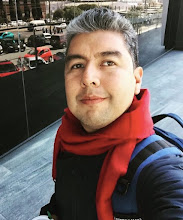Course: Electronic properties of semiconductors by AB-INITIO
Profesor: Dr. Raciel Jaimes López (Postdoctoral at IER-UNAM)
 |
Simulation of water molecule formation using Burai 1.3 and Quantum Espresso
Viewer by Jmol
|
Here I share the methodology I follow for the example water-molecule
- Install BURAI1.3 on MAC (includes Quantum-Espresso)
- Install MPI for MAC
- Open BURAI and choose examples/XYZ: Water molecule (H2O.xyz)
4. Move selected atoms and add two more hydrogen atoms (decompose de molecule)
 | |
|
 |
Separate two atoms
|
 |
Right-click - put an atom
|
 |
Keep all the parameters.
|
 |
Save the project with a new name Example: Water-Curse
|
- SCF (), configure PLANE WAVE
Energy cutoff for wave function = 10 Ry and Energy cutoff for charge = 400 Ry (We don't know the reason about this values, but we will make the first simulation with these parameters - professor recommendation ) This are the initial values for the optimization.
Save the project
- Optimize: Open optimize section and don't change anything and save the project
 |
Optimize configuration
|
 |
Don't change any configuration and save the project.
|
- Run the simulation (Let's see what happen).
 |
Run command: star simulation of 4 Hydrogen and 1 Oxygen atom
|
 |
Run a Job (# Processors and #Threats) For my computer 1 processor (MPI) and 2 Threats (OpenMP)
|
 |
HOME TAB: running indication in this tab (red color for calculation)
|
Begin - 21:30 Hrs , Finish - ?
 |
Same window: Running unlist mode (There is no progress bar, indicator) How can we calculate spent time?
|
 |
While running, we can open the Water-curse TAB and watch the Results.
|
 |
There are results for the first iterations (The process is not finished yet).
|
 |
IN (Blue)
|
 |
LOG (Blue)
|
 |
SCF.ene (2 iterations at this time - 21:38 ) Just a couple of minutes.
|
 |
OPT-ene (14 iterations - 21:40 hrs ) Geometric Optimization
|
 |
OPT.force (15 iterations - 21:41 hrs) Geometric Optimization ,Optimization is not converged?
Update: When optimization is not converged, it means that calculation has not finished yet.
|
OPT.movie - Formation of the water molecule (67 Iterations )
|
- We put 4 hydrogen and 1 oxygen atom.
- Burai and Quantum-Espresso made the simulation (calculation) to obtain the possible molecule formed at T = 0K, minimum of energy.
- Converged at 68 iterations (22:14 ) near 45 minutes of analysis.
- Finished simulation (Convergence)
 |
SCF.ene (Convergence at 5 iterations)
|
 |
OPT.ene - Geometric optimization
|
 |
OPT.force - Geometric optimization
|
- Analysis of optimized formed molecule H2O (water molecule)
- Use a VIEWER to measure the distance from H to O atom.
- Measure the tetrahedral angle.
Expected:
 |
| URL: https://www.quora.com/Why-isnt-the-water-molecule-linear |
9.1 Files created on the water-curse project: Which is the water structure file?
9.2 Use Jmol (View) to open analysis
 |
espresso.log.opt is the file readable by Jmol.
|
 |
Measure distance between atoms. 0.097 nm (simulation ) vs 0.09584 nm (theory)
|
 |
Angle measurement with JMol: http://biomodel.uah.es/en/DIY/Jmol/help/inicio.en.htm
|
Notes
Jesús Capistrán-Martínez
Web: https://www.jesuscapistran.com
e-mail: jecam@ier.unam.mx
Doctorate (2017) Energy Engieenering (UNAM-Mexico)
Web: https://www.jesuscapistran.com
e-mail: jecam@ier.unam.mx
Doctorate (2017) Energy Engieenering (UNAM-Mexico)





No comments:
Post a Comment